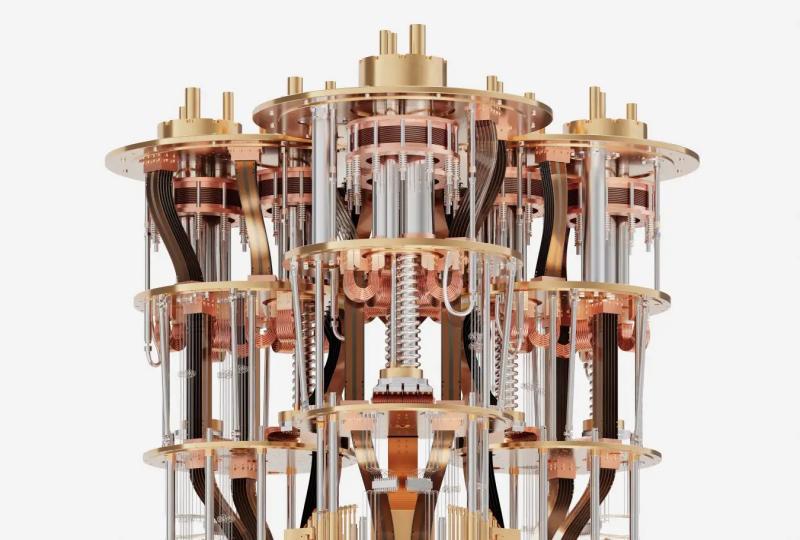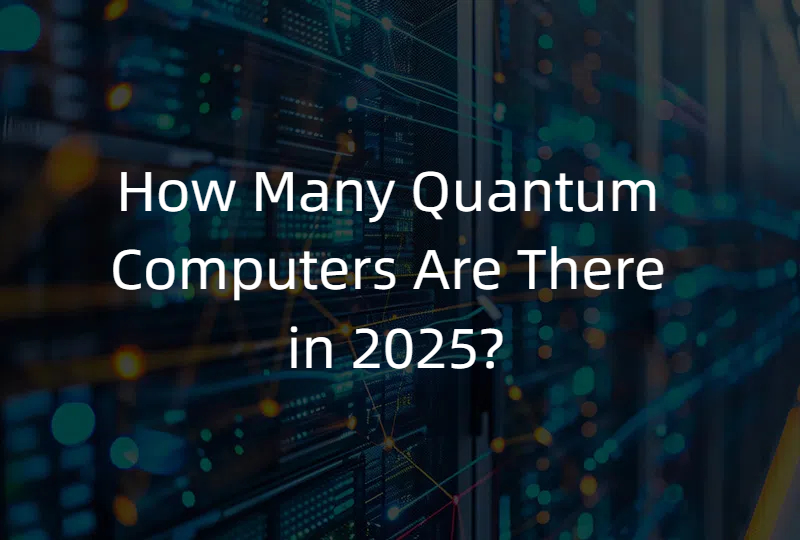How Does a Quantum Computer Work? Simple Explanation
2025.03.09 · Blog how does a quantum computer work
Quantum computing is revolutionizing the field of computation by leveraging the unique properties of quantum mechanics. But how does a quantum computer work? In this article, we’ll break down the core principles behind quantum computing, such as qubits, superposition, entanglement, and quantum gates, to help you understand how these advanced machines are set to solve problems beyond the reach of classical computers.
Qubits: The Building Blocks of Quantum Computing
In classical computers, the basic unit of information is the bit, which can be either a 0 or a 1. Quantum computers, however, use qubits (quantum bits) as their fundamental unit of information. Unlike classical bits, qubits can exist in multiple states simultaneously, thanks to a property called superposition.
This means that a single qubit can represent both 0 and 1 at the same time, allowing quantum computers to process exponentially more data in parallel. Think of it like flipping a coin—while a classical computer sees it as either heads or tails, a quantum computer sees it as both heads and tails until it is measured.
Superposition: More Power in Less Space
Superposition is a fundamental property of quantum mechanics that allows qubits to exist in multiple states simultaneously. In the context of quantum computing, this means that a quantum computer can solve many different possibilities at once.
For example, a classical computer would need to check every possible combination to solve a complex problem. A quantum computer, thanks to superposition, can explore multiple solutions in parallel, greatly speeding up calculations for certain types of problems, such as optimization or factoring large numbers.
Entanglement: Linking Qubits Together
Quantum entanglement is another critical principle that powers quantum computing. When two qubits become entangled, their states become intertwined in such a way that the state of one qubit directly affects the state of the other, no matter the distance between them.
This means that information from one qubit can be instantaneously shared with another, enabling quantum computers to perform complex computations much faster than classical systems. Entanglement is a key feature that allows quantum computers to process and transmit information in fundamentally new ways.
Quantum Gates: Performing Operations on Qubits
Quantum computers rely on quantum gates to perform operations on qubits, similar to how classical computers use logical gates (AND, OR, NOT) to manipulate bits. Quantum gates operate on qubits in superposition and entanglement, allowing them to perform complex calculations.
Some common quantum gates include:
Hadamard Gate (H): Creates superposition, placing qubits in a state of both 0 and 1.
CNOT Gate: Entangles two qubits, creating a relationship between them.
Pauli-X, Pauli-Y, and Pauli-Z Gates: Perform rotations on qubits, flipping their states in various ways. These gates are combined in circuits to perform quantum algorithms.
Quantum Interference: Strengthening Correct Answers
Once quantum gates have manipulated qubits, the next step is quantum interference. Just like waves can amplify or cancel each other out, quantum waves can interfere with one another, strengthening the likelihood of correct answers while canceling out wrong ones.
Quantum interference helps ensure that, when a quantum computer is measured, the probability of observing the correct answer is maximized. This phenomenon is essential for quantum algorithms, such as Shor’s algorithm for factoring numbers or Grover’s algorithm for searching databases.
Measurement: Collapsing the Quantum State
Once the quantum computer has completed its operations, it’s time to measure the qubits. When qubits are measured, their superposition collapses, and they take on definite states (either 0 or 1). This is where quantum computers return results.
However, due to the probabilistic nature of quantum mechanics, the outcome is not always certain until measurement. Quantum computers use the statistical properties of many qubits and calculations to maximize the chances of obtaining the correct result.
Why Quantum Computers Are Powerful
Quantum computers have the potential to solve problems that are currently impossible or highly impractical for classical computers. Problems that involve large-scale data sets, such as drug discovery, cryptography, optimization, and machine learning, stand to benefit from quantum computing.
By exploiting superposition, entanglement, and quantum gates, quantum computers can process vast amounts of information in parallel and perform complex calculations more efficiently. As a result, they are set to outperform classical computers in areas such as factoring large numbers, simulating quantum systems, and solving optimization problems.
Challenges and Future of Quantum Computing
While quantum computers hold immense potential, there are several challenges to overcome before they become widely accessible. These include:
Quantum Decoherence: Quantum information is highly sensitive to environmental disturbances, which can cause qubits to lose their state.
Scalability: Building large-scale quantum computers with thousands or millions of qubits is still a significant challenge.
Error Correction: Quantum error correction is necessary to maintain reliable quantum operations, but it requires more qubits and resources.
Despite these challenges, companies like IBM, Google, Microsoft, and SpinQ are making significant progress toward developing practical quantum computers.
Conclusion
Quantum computers operate on the principles of quantum mechanics, utilizing qubits, superposition, entanglement, and quantum gates to perform powerful computations. While the technology is still in its early stages, it holds the potential to transform industries ranging from cryptography to AI. As quantum research advances, we can expect quantum computers to become more powerful, scalable, and accessible, opening new frontiers in computation.
Featured Content






